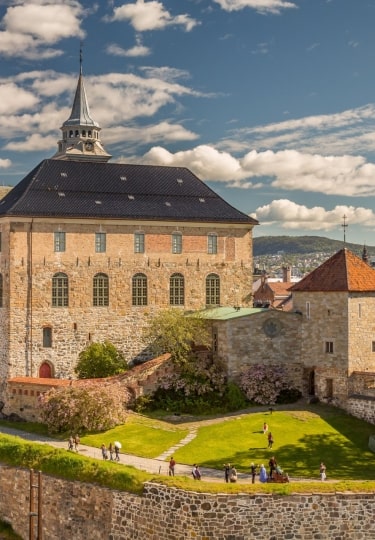If you find yourself visiting Norway, Denmark, or Sweden in summer, you’ll come to appreciate their sense of “hygge”—the word used by Danes and Norwegians to describe a feeling of coziness, contentment, and conviviality.
Scandinavia’s relaxed lifestyle, inspired culinary and coffee shop scene, and friendly, open people are some of the reasons why it’s one of the best destinations to visit in the summer when the sun barely sets and the towns and cities are buzzing with life.
Visit the Norwegian fjords and you’ll also come to understand “friluftsliv,” a local term that describes a sense of complete immersion in the outdoors and of living in the moment.
Step away from urban life and embrace the magnificent mountain scenery through activities such as camping, hiking, rock climbing, kayaking, and mountain biking.
If you’re interested in this fascinating region of the world, here are nine of the best cities in Scandinavia to explore on your next trip.
Copenhagen, Denmark
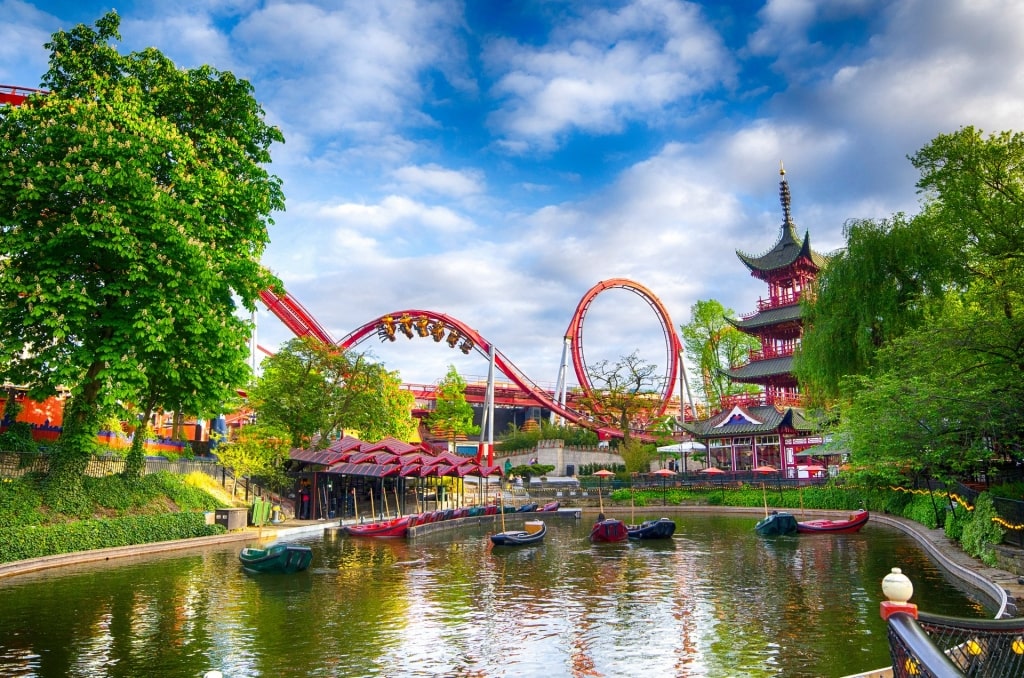
Tivoli Gardens in Copenhagen, Denmark
The capital of Scandi cool, Copenhagen is a wonderful city to explore on foot or bicycle, as it is flat, accessible, friendly, and compact.
There’s plenty to see, starting with Amalienborg Palace, home to the Danish royal family, and Christiansborg, another ornate palace that was once home to the royals until 1794 and now the site of Parliament. A glimpse inside both reveals lavish tapestries, grand entertaining halls, and glittering chandeliers
Get a picture of The Little Mermaid statue, perched on a rock on the waterfront, and don’t miss wandering through the lush Tivoli Gardens, a favorite picnic and summer drinking spot with locals. If you’re traveling Europe with kids, make sure to head to the carousels, dodgems, and roller coasters in the amusement park.
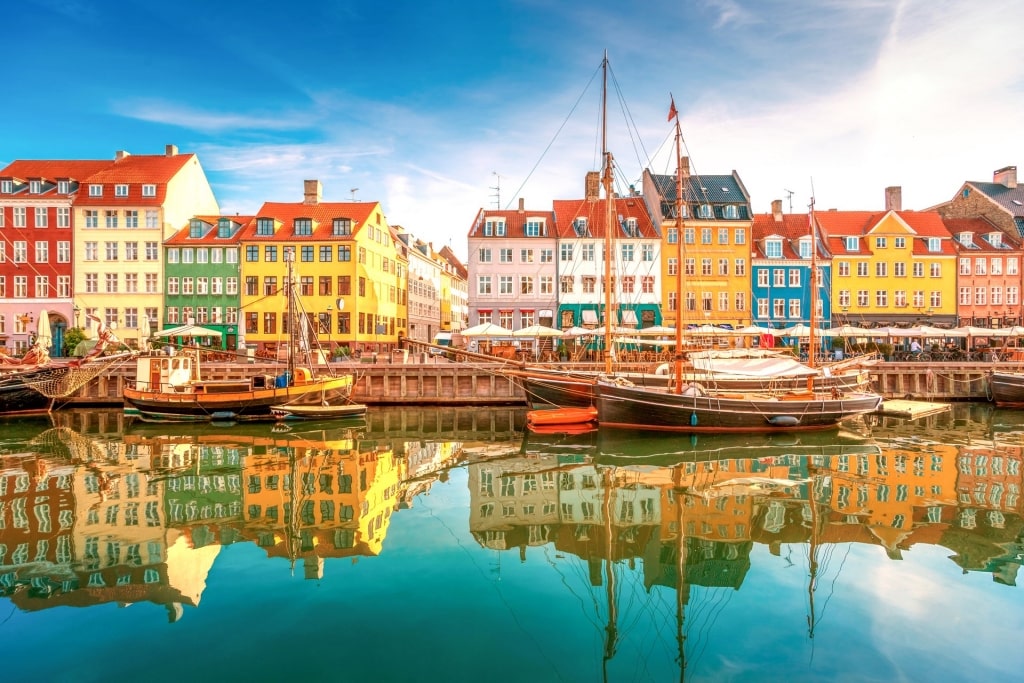
Nyhavn in Copenhagen, Denmark
Visit Nyhavn, too, a bustling canal lined with brightly colored, gabled townhouses, where its banks are packed with alfresco cafés and restaurants where you can try some of the best food in Copenhagen.
Take time to join the locals for a cold beer and an open sandwich or wander along pedestrianized Strøget, the main shopping street in one of Europe’s best shopping cities, and marvel at the beautiful styling in every store, where you’ll find chic fashion and tasteful homeware items.
If you have more than one day in Copenhagen, take a detour just outside of town and admire the graceful sweep of the Øresund Bridge, Europe’s longest road and rail bridge, which spans five miles and links Denmark to the Swedish city of Malmö.
Meanwhile, Shakespeare fans will want to take a tour to Helsingør to see the majestic Kronborg Castle, which was the setting of Hamlet. If you’re lucky, your visit will coincide with the annual summer Shakespeare festival that takes place in this dramatic setting.
Stavanger, Norway
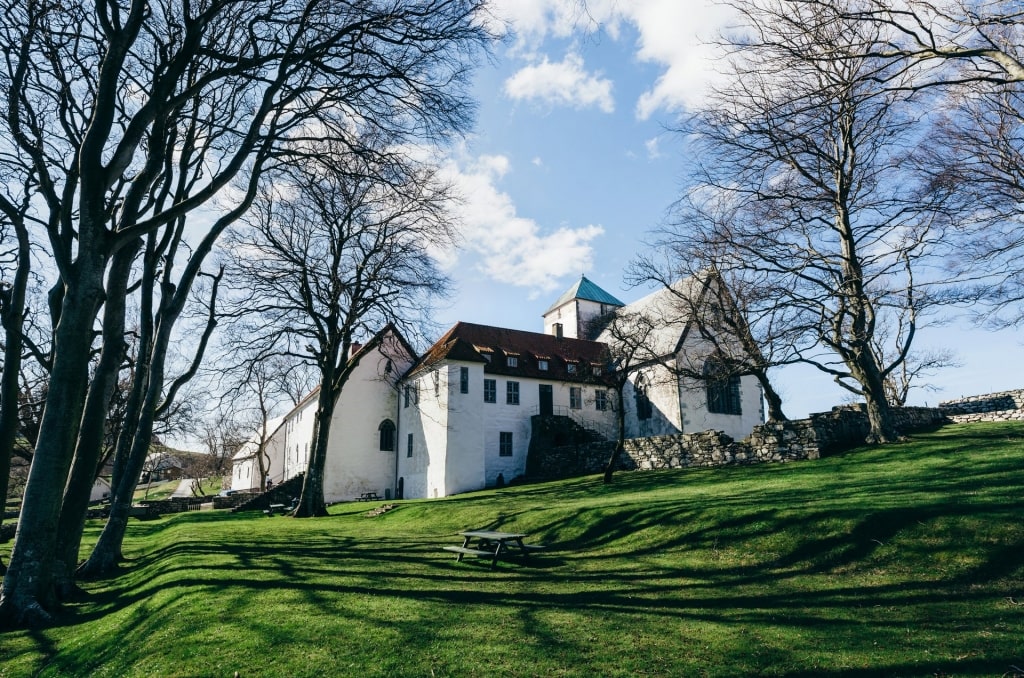
Utstein Monastery in Stavanger, Norway
Bustling Stavanger is the gateway to some of Norway’s most dramatic fjordland scenery.
One of the best things to do in Stavanger is to wander through the flower-filled, cobblestone streets of Old Stavanger that are lined with 18th-century, white wooden cottages.
Just out of town, visit the 12th-century Utstein Monastery left to decay after the Reformation but carefully restored in 1750. Today it’s the only surviving monastery in Norway from this era.
Some fifteen miles from Stavanger, the 26-mile Lysefjord is one of Norway’s most beautiful stretches of water. Here, sheer cliffs more than 3,000 feet high plunge into the sea, while silver-white waterfalls tumble into the aquamarine fjord that’s sometimes as deep as the mountains are tall.
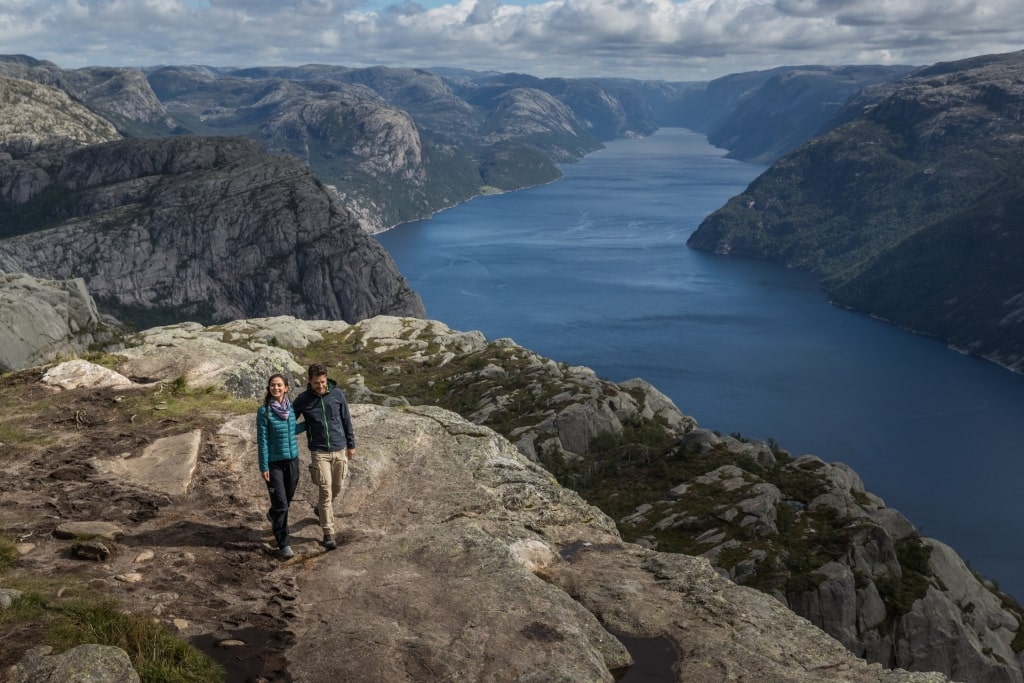
Pulpit Rock, Norway
Lysefjord means “light fjord” and it’s a fitting name as the light here has a certain ethereal quality, especially when mist hangs over the granite cliffs. The site is famous for two extraordinary natural features: The square block of Preikestolen and Kjeragbolten.
Preikestolen, also known as Pulpit Rock, is a plateau that juts out over the fjord at a height of almost 2,000 feet. Formed over 10,000 years ago, the rock is reached by a tough hike.
Once you reach the summit, you’ll be rewarded with a breathtaking view of the fjord below. Look out for Kjeragbolten, a large boulder wedged in a crevice near the top of Mount Kjerag, the highest mountain in the fjord.
Stockholm, Sweden
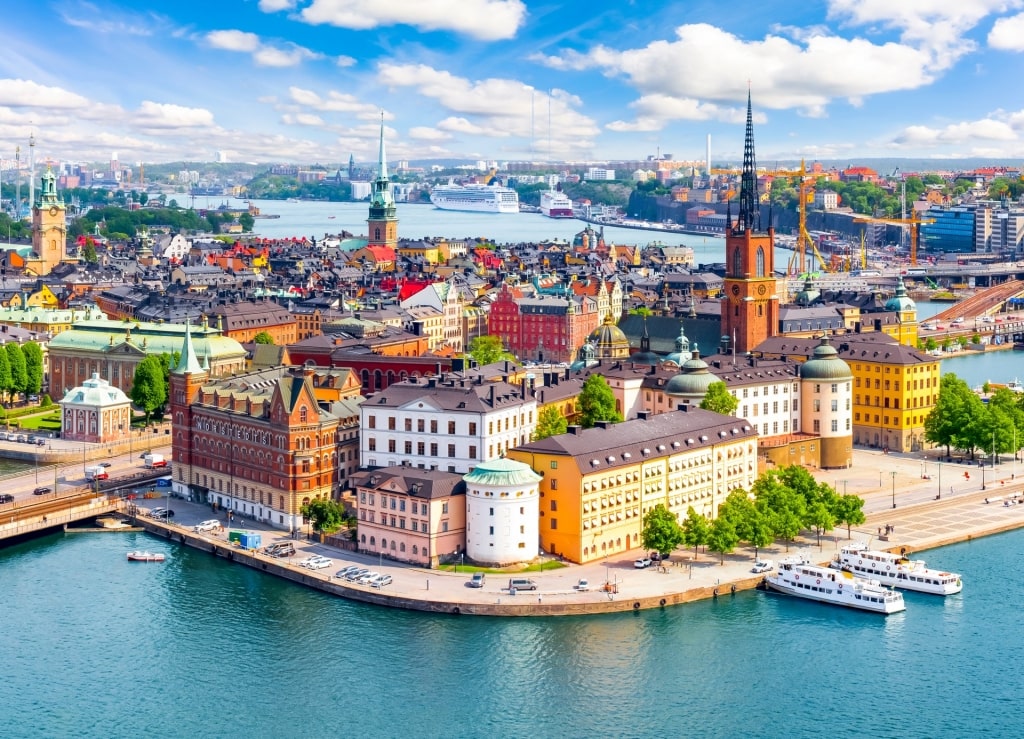
Stockholm, Sweden
Stockholm is one of the best Scandinavian cities for culture, food, music, and history. The narrow, cobblestoned alleys of medieval Gamla Stan resemble a living museum lined with gabled buildings in shades of terracotta, ochre, and green, while the sprawling complex of the lavish Royal Palace and the Nobel Prize Museum provide a fascinating insight into Swedish history.
Gamla Stan is packed with cool restaurants, many offering Scandinavian food with contemporary twists, as well as intriguing, independent boutiques specializing in anything from vintage clothing to that inimitable Scandi chic look.
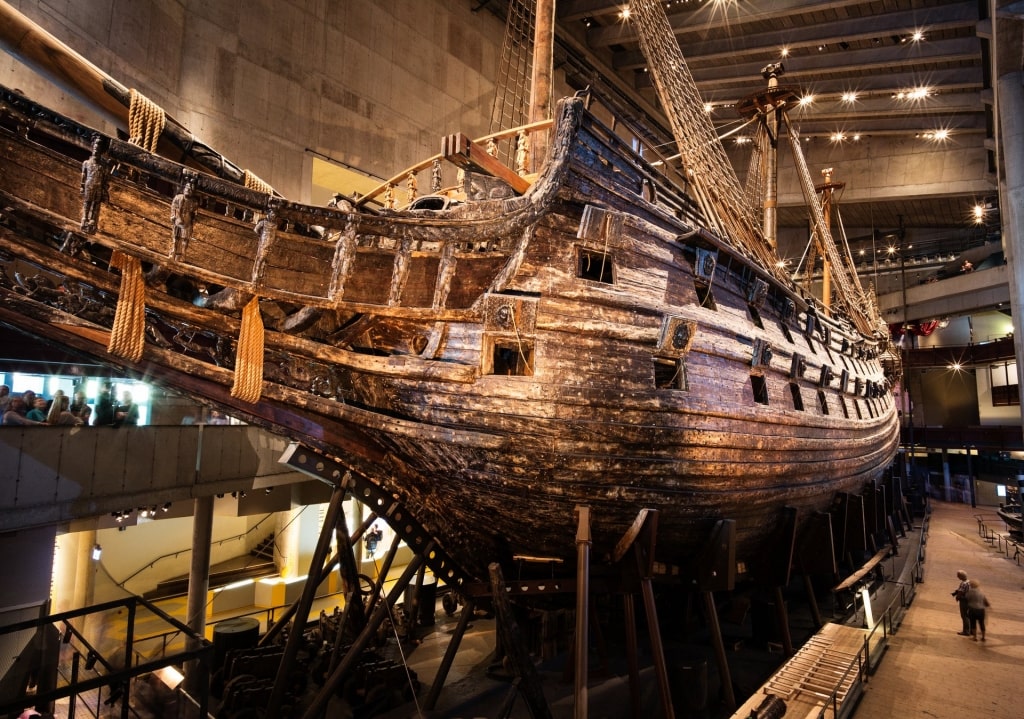
Vasa Museum in Stockholm, Sweden
Don’t miss the Vasa Museum on the waterfront, one of the best museums in the world, which provides a fascinating glimpse into the world of 17th-century shipbuilding.
The Stockholm museum was a top-heavy warship that sank in the harbor on its maiden voyage in 1622, but after 333 years on the seabed, it was raised and painstakingly restored. Today, it’s Sweden’s pride and joy and the world’s most perfect example of a 17th-century warship.
For a glimpse at traditional Swedish living, head to Skansen, a fascinating outdoor museum complete with pottery, a 19th-century style bakery, and an herb garden. For all the flares and glitter of the 1970s, and the irresistible hits of Swedish icons, ABBA, fill the senses at the hugely popular Abba Museum.
Read: 22 Best Lakes in Europe
Ålesund, Norway
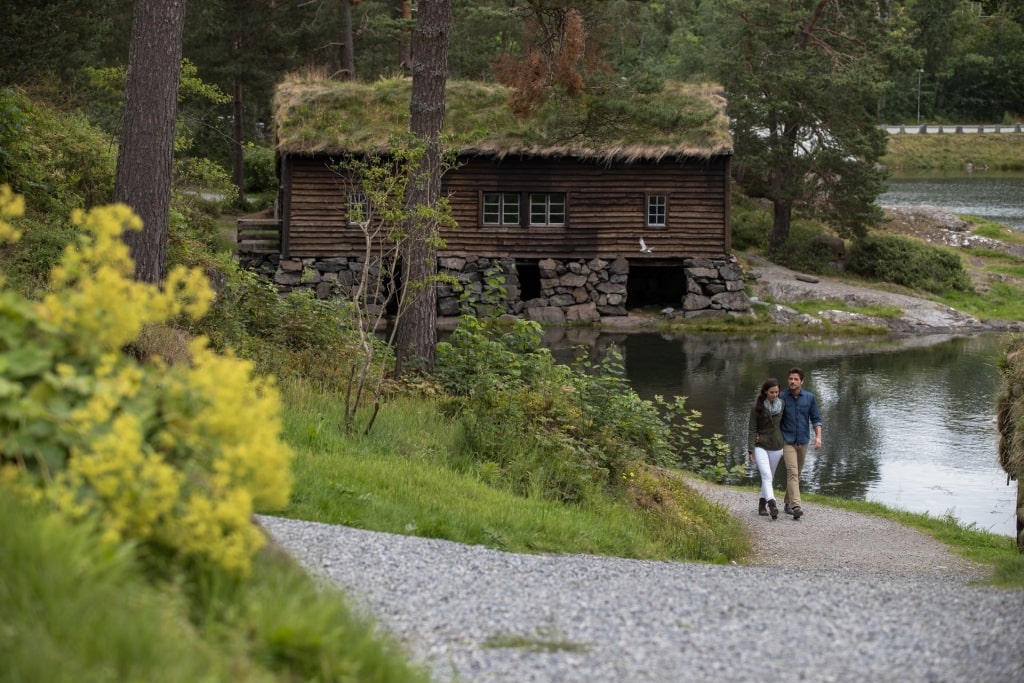
Sunnmøre Museum in Ålesund, Norway
Lying on a narrow peninsula surrounded by islands, Ålesund was destroyed by fire in 1904 but was eventually rebuilt and rose like a phoenix as one of the best cities in Scandinavia for elegant and colorful Art Nouveau architecture.
Many of the finest buildings are found around the harbor, where it’s fun to simply wander around, poking into the quirky stores for gifts; nautical antiques are a good buy here, as well as crafts made from local materials like wood and stone.
Several excellent fish restaurants can be found here, too, as this is the home of Norway’s largest cod-fishing fleet, allowing plenty of opportunities to sample the wares of local fishermen.
For more fishing culture, visit the Sunnmøre Museum. More than 55 old Norwegian houses have been relocated here, which tell the story of the cultural and architectural history of the region. You’ll also see one of Norway’s largest collections of historic boats, including replicas of Viking-era ships.
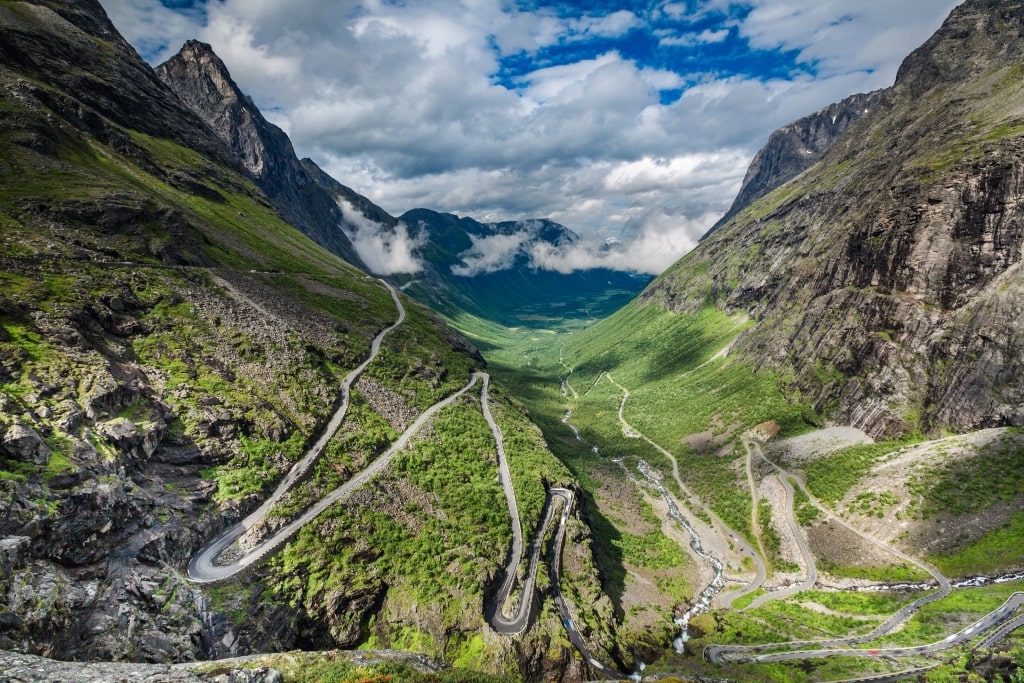
Trollstigen, Norway
The Trollveggen, or Troll’s Wall, is a towering rock face accessed by the Trollstigen, a hair-raising Norwegian mountain road that loops past waterfalls and rock chasms through eleven switchbacks. Or take a boat trip along Hjørundfjord, which stretches 20 miles into the Sunnmøre Alps, framed by towering, 5,000-foot mountains.
Bergen, Norway
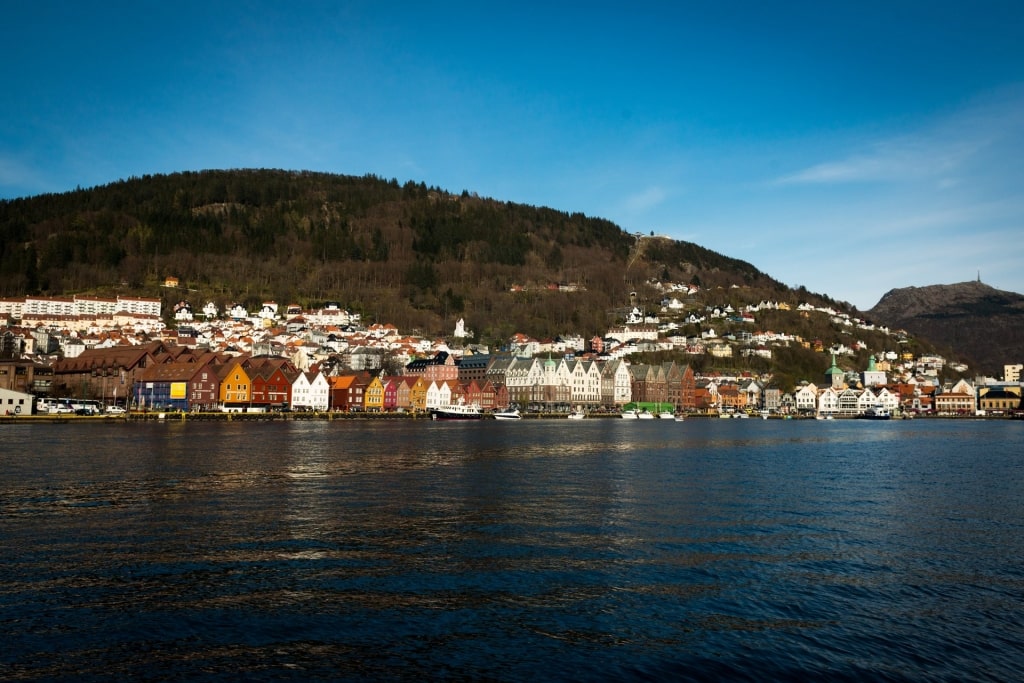
Bryggen in Bergen, Norway
Norway’s former capital, Bergen, is at its absolute best in summer when the waterfront is buzzing with visitors and locals take to the pavement cafes to enjoy the sunshine.
On the eastern side of the harbor, the lovely old clapboard houses of Bryggen in jaunty shades of pink, red, and orange are a World Heritage Site, conserving the legacy of the old Hanseatic wharf buildings. Today, the former warehouses conceal a warren of artists’ studios that are home to jewelers, painters, and textile designers.
One of the best things to do in Bergen is to visit the Fish Market, crammed with stalls selling fresh and cooked fish, coffee, berries, and flowers, which is always busy with shoppers stopping for a lunchtime snack.
On sunny days, the Fløibanan funicular is the best route to a sweeping view of the city and harbor with wonderful views from the top of Mount Fløyen, where you can go on a hike.
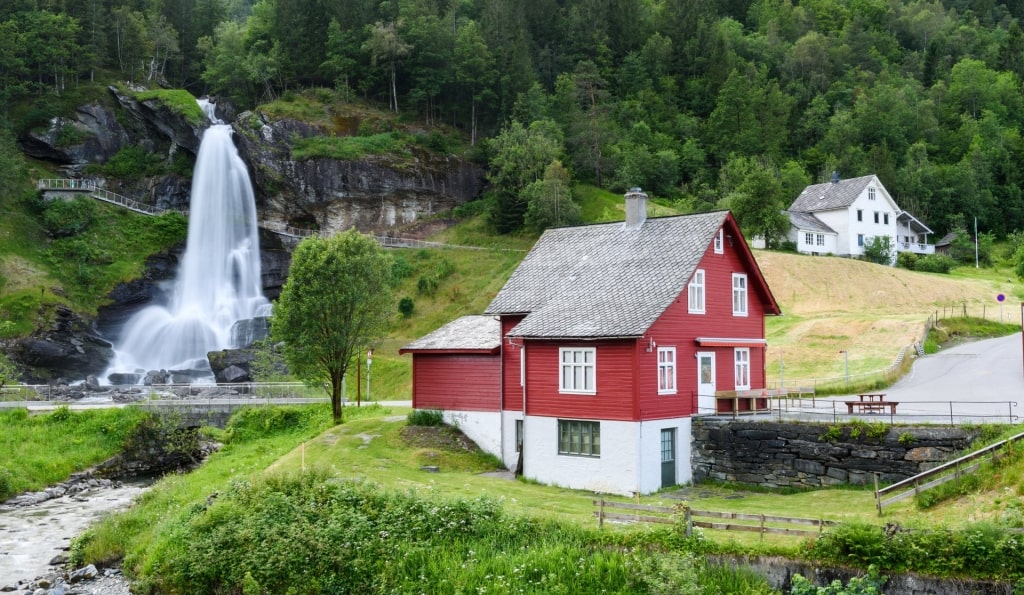
Steinsdalsfossen Waterfall, Norway
Also just minutes from the town is the breathtaking natural scenery of the fjords, forested cliffs, and rocky inlets where seals bask and eagles perch. If time permits, join a trip to Troldhaugen, the Victorian villa of Edvard Grieg, on the shores of Nordaas Lake, where the composer lived and composed for 22 years.
Some tours stop at Steinsdalsfossen, one of many tumbling waterfalls you’ll see in the fjords. As one of the most beautiful places to visit in Norway, this one stands out for its walkway that takes you behind the curtain of foaming water.
Oslo, Norway
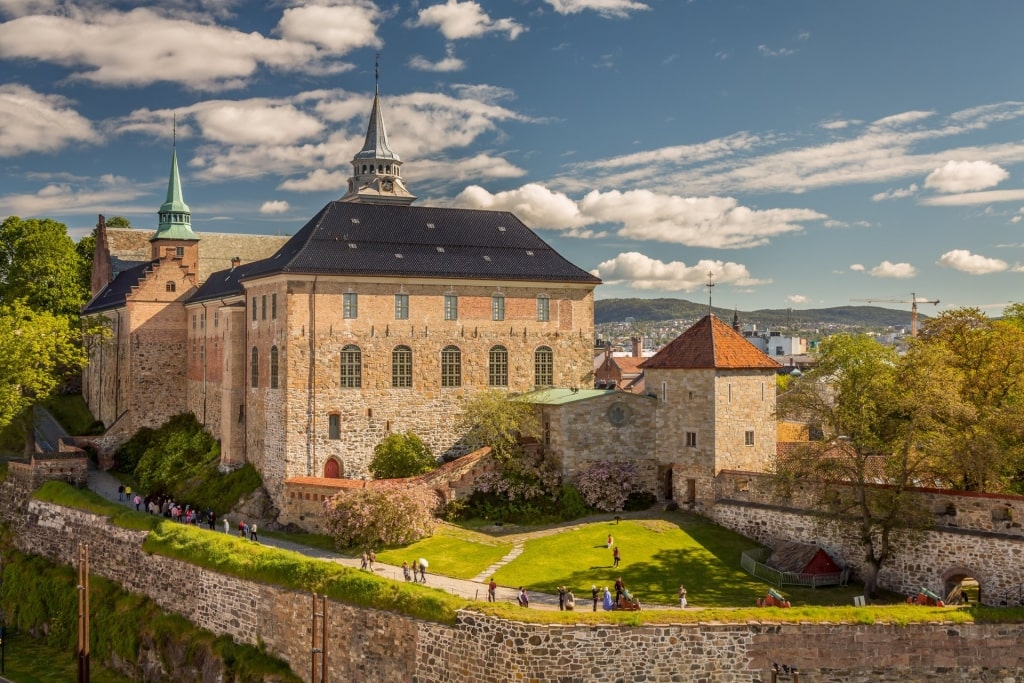
Akershus Fortress in Oslo, Norway
Norway’s green, arty, and eminently liveable capital lies at the end of a long fjord, hemmed in by forest and mountains. Compact and cultured, Oslo is emerging as a center for the arts and increasingly, avant-garde cuisine, as a string of Michelin-starred restaurants and cool cafés are putting to rest the notion that Norwegians live on hot dogs.
There’s plenty to see in the city, from the Royal Palace, set in a leafy park where you can stroll, to the medieval Akershus Fortress—one of the best castles in Norway—and the interactive Nobel Peace Centre, dedicated to the winners of this coveted prize and their stories.
Read: 13 Breathtaking Medieval Castles in Europe
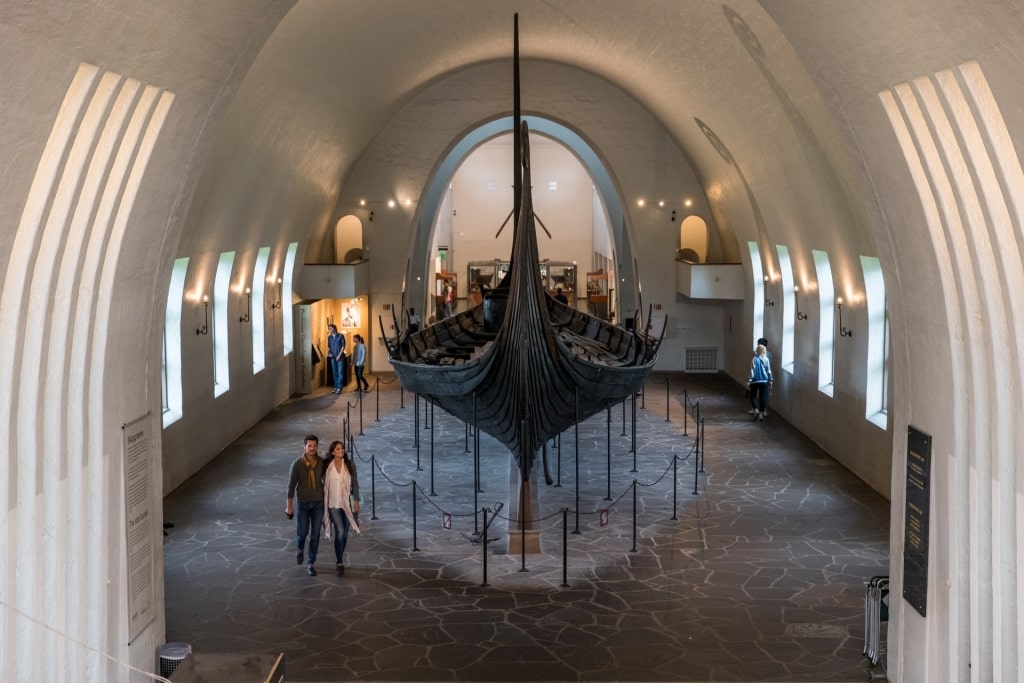
Viking Ship Museum in Oslo, Norway
Visit the Viking Ship Museum to learn about the extraordinary history of the Vikings and see ships dating back to the ninth century, as well as artifacts from ancient burial chambers.
This fascinating museum shares the Bygdøy peninsula with the Norwegian Maritime Museum and the Kon-Tiki Museum, which tells the story of the expeditions of explorer Thor Heyerdahl.
If you want to see Edvard Munch’s iconic painting, The Scream, head to the National Gallery. But the expressionist’s work extends way beyond this disturbing image, so visit the brand new Munch Museum on the regenerated waterfront to admire his brightly colored landscapes, rural scenes, and portraits.
For the best views of the city and fjord, one of the best things to do in Oslo is to visit Holmenkollen, the Olympic ski jump. The views from the top of the tower are magnificent and there’s a fascinating museum that delves into the history of skiing and polar exploration, topics close to the hearts of Norwegians.
Geiranger, Norway
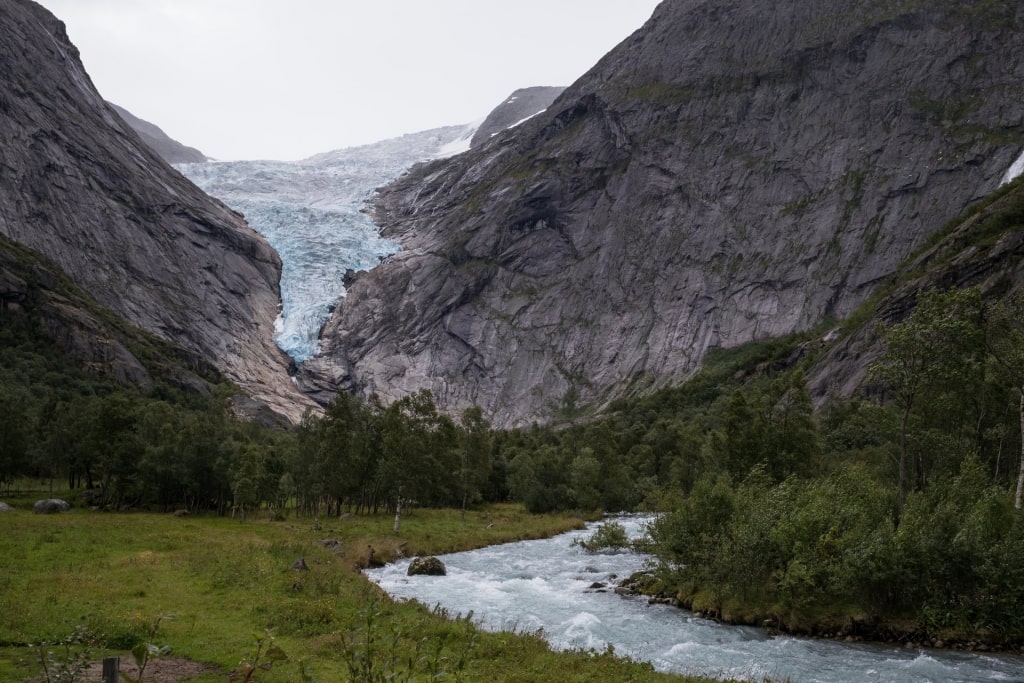
Briksdal Glacier in Geiranger, Norway
Geirangerfjord ranks as one of the longest and deepest fjords in the world, earning it a spot on the UNESCO World Heritage list. Waterfalls cascade from almost vertical mountain sides over 900 feet in height.
The famous falls De syv søstrene (Seven Sisters), Friaren (the Suitor), and Brudesløret (Bridal Veil) tease the cliffs with graceful veils of mist, catching the occasional rainbow.
Geiranger itself is little more than a village with some of the most dazzling scenery of the region within easy reach. Take a tour to the village of Olden and go on a ride on a Troll Car, a seven-seater electric vehicle resembling a chunky golf cart.
The ride takes you within 1,700 feet of the icy tongue of the Briksdal Glacier. Hike the short distance to get up close to this creaking wall of ice.
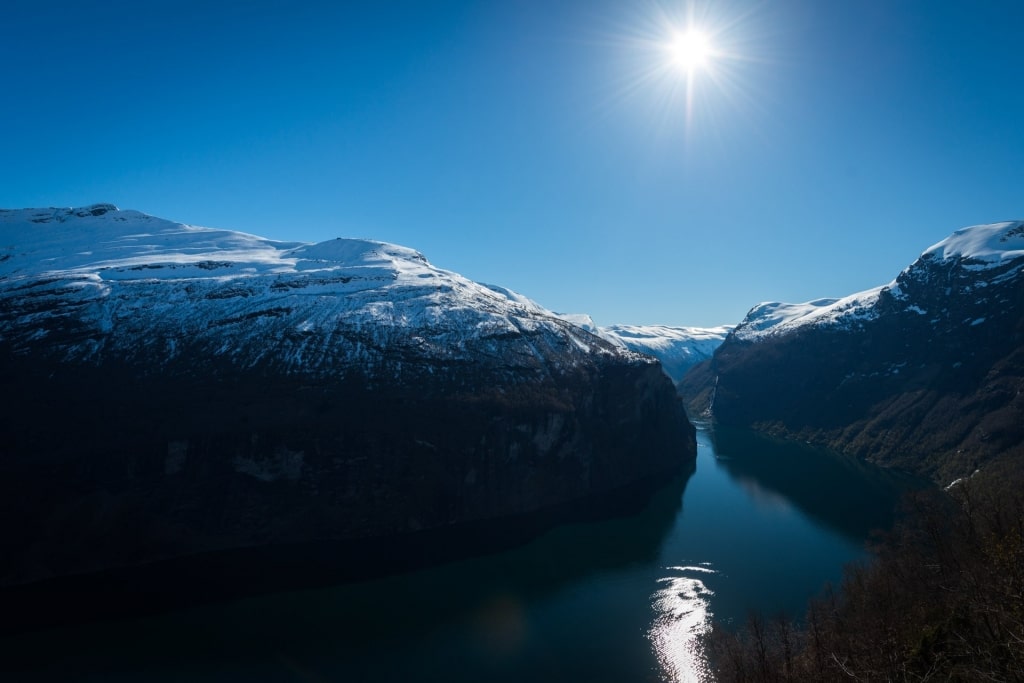
Geirangerfjord in Geiranger, Norway
Or head up Mount Dalsnibba at the head of the fjord, passing through lush farmland where cattle graze, climbing ever higher via a series of switchbacks to 4,500 feet for views down over the arm of the sapphire-blue Geirangerfjord, hemmed in by towering mountains and waterfalls.
If you dare, one of the most exciting things to do in Norway is to venture onto the Skywalk, a metal platform built into the rocks that juts out so you feel as though you’re taking a leap of faith and stepping straight off the cliff.
Olden, Norway
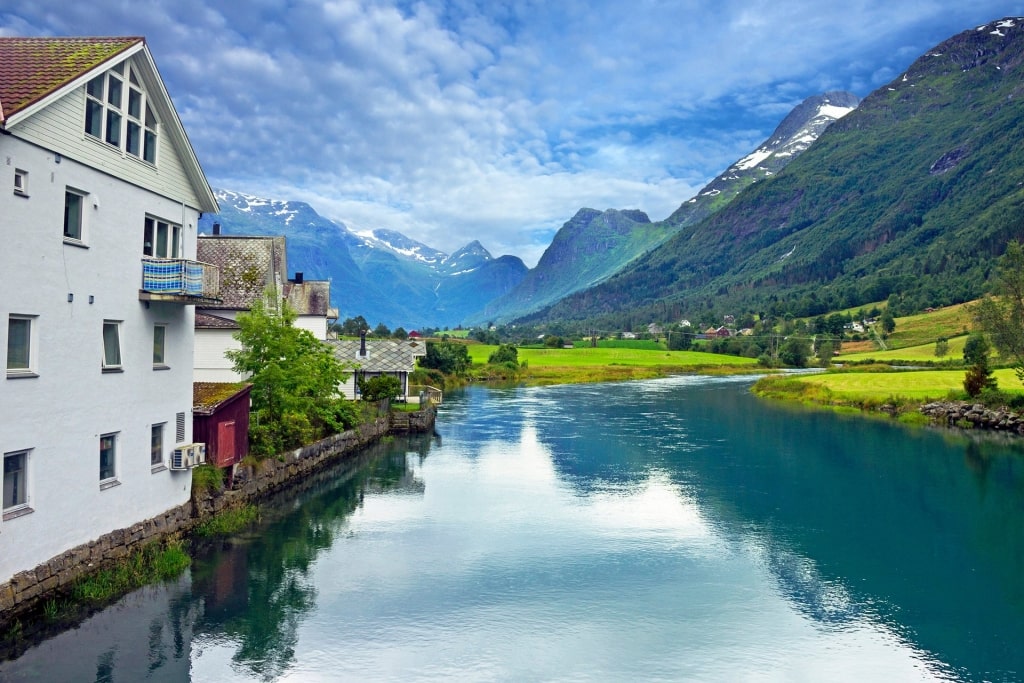
Olden, Norway
A sleepy farming community at the end of a curving arm of the Nordfjord, Olden is the gateway to a landscape of high mountain lakes, deep fjords, and snow-capped peaks. For perspective on this beautiful setting, ride the Skylift cable car from the neighboring village of Loen up 3,600 feet to Mount Hoven.
From the top, you’ll have panoramic views of Lake Lovatnet, the vast Jostedalsbreen Glacier, mainland Europe’s largest, Olden itself, and the long, narrow Nordfjord. Numerous hiking trails start from the cable car station.
The mighty Jostedalsbreen extends its icy arms across the mountaintops. Take a boat ride on one of the best lakes in Norway, Lake Lovatnet, a glacial lake in an iridescent shade of turquoise with views of the tongue of the ice-blue Kjenndalen glacier, one of Jostedalsbreen’s tentacles.
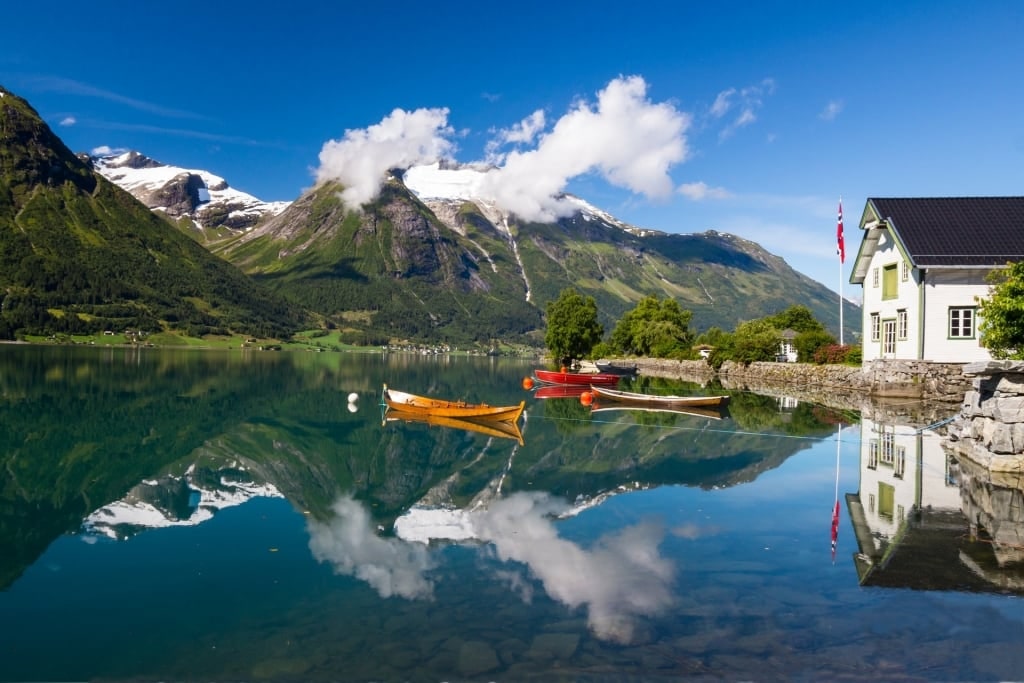
Lake Oppstryn, Norway
Briksdal is another offshoot of this vast icefield, accessed by a scenic hike along a rushing mountain river and a glassy lake flecked with ice. Or visit Lake Oppstryn, another glacier-fed lake at almost 2,000 feet above sea level, which is accessed via nineteen hairpin bends.
Call in at the Jostedal National Park Center, designed in the style of a Viking longhouse, to learn about the geology of this beautiful place. You’ll work up an appetite in all this fresh air, so luckily, traditional Norwegian cuisine is always at hand: coffee served with waffles piled high with berries and whipped cream.
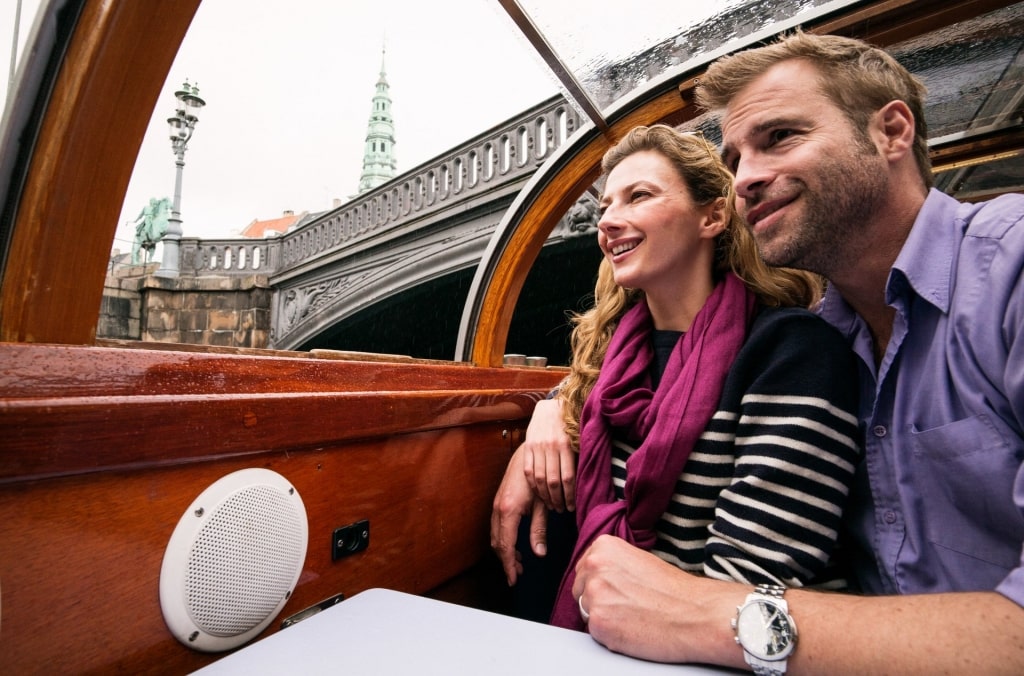
Copenhagen, Denmark
Tempted to explore the great outdoors or immerse yourself in the culture and cuisine of Scandinavia’s stylish cities? Browse our cruises to Scandinavia and start planning your next adventure.
